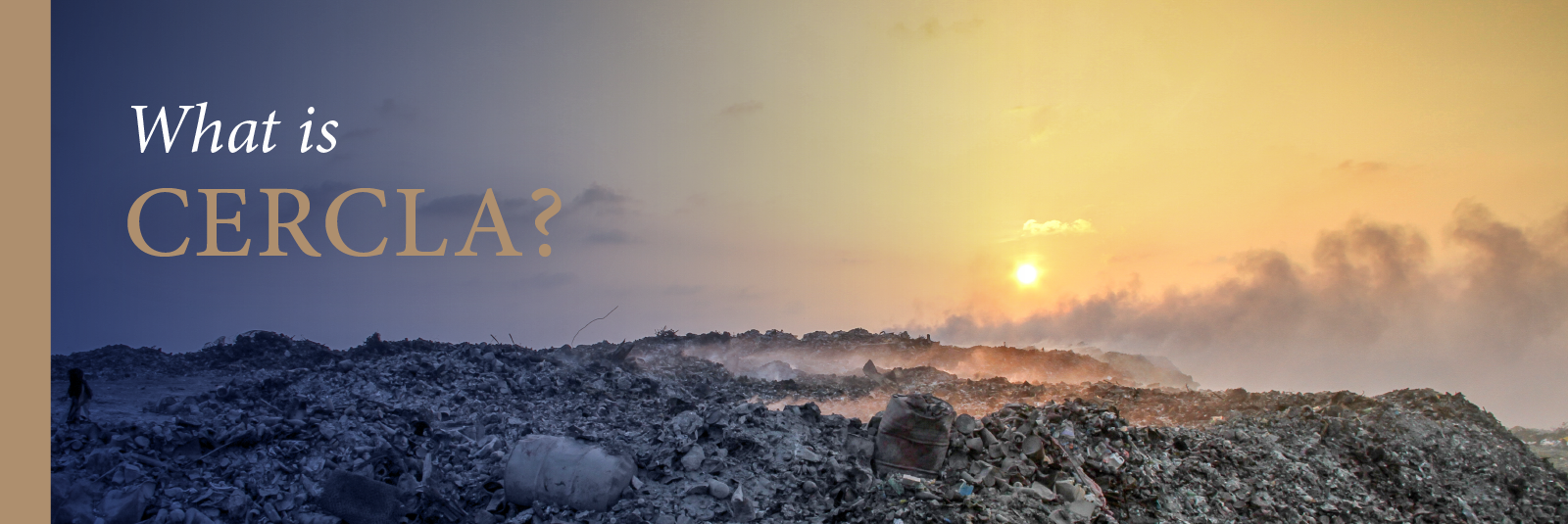Today, we know a lot about the harmful environmental impacts of hazardous waste. But that wasn’t always the case. Prior to the Love Canal disaster in the 1970s, there was little to no regulation regarding the handling of toxic waste in the United States.
What was the Love Canal disaster? And how did it impact environmental legislation? We’ll discuss how the environmental tragedy led to the enactment of the Comprehensive Environmental Response, Compensation, and Liability Act (CERCLA), the first legislation of its kind to address hazardous waste disposal in the U.S.
What was the Love Canal Disaster?
In 1942, the Hooker Chemical Company began dumping chemical waste into Love Canal, an abandoned canal project in Niagara Falls, New York. Over the course of the next 11 years, the company disposed of an estimated 21,000 tons of toxins, including 12 carcinogens, into the 16-acre landfill. In 1953, the landfill was sealed, and a school playground was later built over the site.
Years later, those harmful pollutants began entering the local water supply and seeping into the earth around the surrounding Niagara Falls neighborhood. By the 1970s, the local community was immersed in the harmful effects of these toxins. Hundreds of people were experiencing adverse health effects, ranging from leukemia and birth defects to skin conditions and miscarriages.
Activists began calling on the government for aid. Eventually, President Jimmy Carter declared two state of emergencies in the region--one in 1978 and the other in 1981--relocating the remaining families in the area due to their proximity to the hazardous landfill.
The Love Canal disaster highlighted the government’s shortcomings when it came to addressing toxic waste sites. As a result, the federal government passed the Superfund law, the Comprehensive Environmental Response, Compensation, and Liability Act (CERCLA) of 1980.
This act has become a cornerstone environmental program that authorizes important removal actions, holds responsible parties accountable, and protects communities long-term.
How Does CERCLA Work?
CERCLA gives the federal government the power to tax chemical and petroleum companies found responsible for releasing hazardous waste into unregulated areas. The law enables federal authorities to directly respond to the dumping or spilling of dangerous substances that threaten the environment or human life.
CERCLA permits federal authorities to act swiftly when a qualifying spill occurs, allowing them to manage short-term removals and long-term responses. Part of CERCLA is a federal trust that can be used to fund cleanup efforts when a polluter either can’t pay or can’t be identified.
Why Is CERCLA Important?
The events in Love Canal that spurred the creation of CERCLA sparked a national conversation about the dangers of dumping hazardous materials in unregulated communities.
CERCLA holds guilty parties accountable for unlawful dumping and ultimately forces companies handling dangerous materials to be more conscientious. By increasing accountability and penalizing those guilty of dumping hazardous substances, the instances of hazardous spills have decreased. When a spill does occur, CERCLA’s cleanup protocol ensures these accidents are handled quickly and effectively.
Who is Held Liable under CERCLA?
CERCLA outlines several parties that could be held liable in the event of an improper hazardous waste disposal:
- The current owner or operator of a facility that has had a previous toxic waste incident
- The owner or operator of a facility at the time of the disposal or release of toxic waste
- The transporter of toxic waste
- The person who arranged for the disposal of hazardous waste
- The person who arranged for the transporter of said toxic waste
- An owner who sells or transfers the facility without disclosing information regarding previous waste disposals
How Can You Protect Yourself Against Environmental Liabilities?
Those responsible for transporting hazardous or dangerous materials can protect themselves with comprehensive pollution insurance. If an incident occurs and you’re found responsible from CERCLA investigations, comprehensive coverage can safeguard your company’s reputation and finances.
CERCLA & Limits of Liability
CERCLA applies to both land- and water-based occurrences. It’s important to choose a vessel pollution underwriter that understands these statues and applies them accordingly to offer the broadest coverage to protect your company’s reputation and finances.
Under section 107(a)1, the limits of liability for an owner or operator of any vessel (other than an incineration vessel) that carries any hazardous substance as cargo or residue is $300 per gross ton or $5,000,000, whichever is greater; or for any other vessel (other than an incineration vessel) the limit is $300 per gross ton or $500,000, whichever is greater. Be careful to read your vessel pollution policy as not all forms include both first- and third-party liability under this section. For questions on CERCLA or any other vessel pollution-related issues, please contact Safe Harbor.





